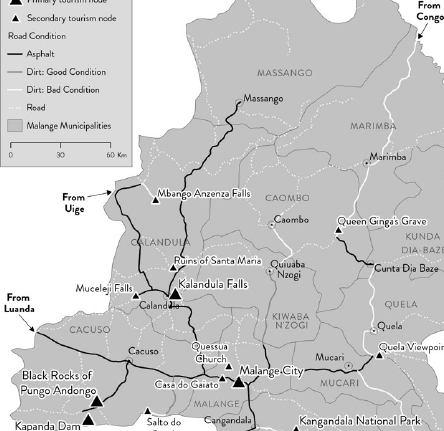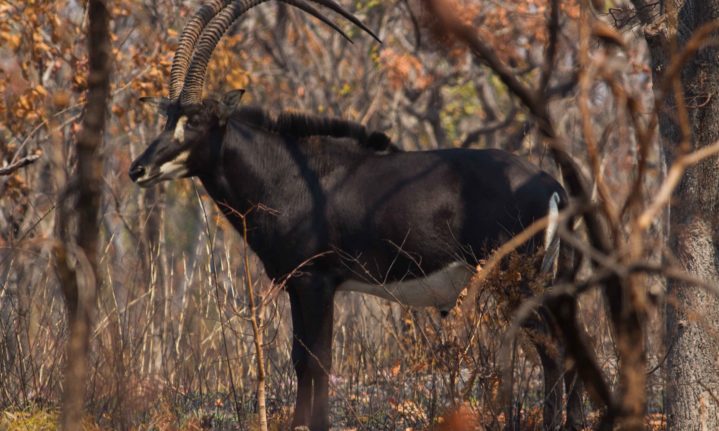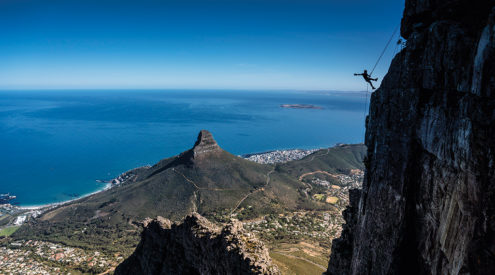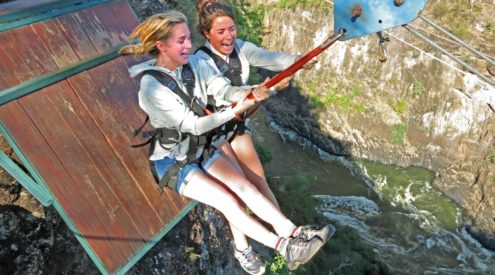Here, the Lucala River comes to a sudden descent, forming one of Africa’s largest waterfalls: the Kalandula Falls. It is a hallmark destination of Angola’s Malanje province, which has the potential to become a prime tourism destination now that the landmines have been cleared.

The Kalandula Falls. Picture: Flickr Commons
A tumultuous history
Angola has suffered the adverse consequences of civil war, with the widespread destruction of infrastructure and livelihoods. The nation also has a long and variegated history with the kingdoms of Ndongo and Matambe, previously located in what is today the Malanje province. Following the fall of the Kingdom of Matambe, the territory became a colony of Portugal. This relationship had its own strifes but what is perhaps most pertinent to peoples minds are the effects of the civil war. The occurrence of landmines and destroyed infrastructure throughout the country present obstacles to the tourism sectors and deterrents for potential travellers.
A world awaits

The Kalandula falls come cascading down a height of 100m. Picture: Caleb Summers.
The tumultuous history aside, Angola has cleared the mines of potential destinations and investor confidence is on the rise, with tourism development and investments in hotel superstructure. In Malanje province, Kalandula falls is probably the main attraction; The recent construction of the Pousada de
Malanje has natures gifts abound and there is more to see than the falls, such as Cangandala National Park, a 600km2 conservation area, that receives 1350mm of rain a year, making it a lush, green environment teeming with wildlife. One animal occurring there is the Giant Sable Antelope a subspecies of the Sable Antelope only found in Angola.
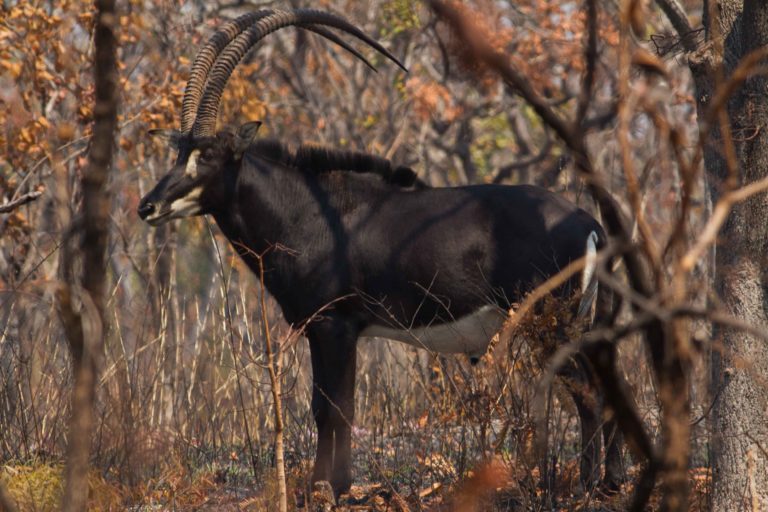
The Giant Sable Antelope, whose long curving horns can exceed 160cm. Picture: Pedro Vaz Pinto.
There was some uncertainty as to how many of these Antelopes survived the Angolan Civil war and in 2003, the Catholic University of Angola was able to obtain photographic evidence of one of the remaining herds from trap cameras set up in the Cangandala National Park. Biologist, Pedro Vaz Pinto commented that: “Looking back, we have moved a long way in, sixteen years since our first hesitant and quite unsuccessful on-foot survey. By then, we weren’t even sure if giant sable had survived the civil war…We estimate the current numbers in Cangandala to be around 80 animals, all still confined inside the 4,400-hectare sanctuary”
Read Biologist Pedro Vaz Pinto’s latest Giant Sable/Palanca Negra Report https://t.co/6lkERQUSot 2019 was a hugely successful year, with 80 animals inside the 4,400-hectare sanctuary #Angola pic.twitter.com/TjdhDUwBal
— Tweet Angola (@TweetAngola) August 3, 2020
The region is also spoilt for choice not only with regards to nature but, places with embroidered in history. One of Angola’s natural wonders and a relatively unknown treasure of the world are the Black Rocks of Pungo Adongo. It is a seemingly out of place rock formation in the middle of an African Savannah, some up to 200m high with its own surrounding legends.
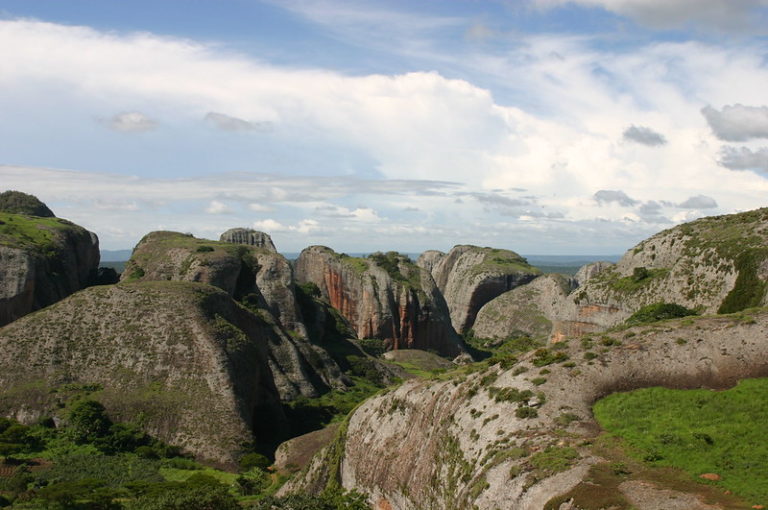
The Black Rocks of Pungo Andongo Picture: José Carlos Da Silva
The legend goes that these rocks were once the capital of the Kingdom of Ndongo, ruled by Queen Njinga Mbande. She is sometimes known as the warrior queen for defending the kingdom against the Portuguese and taking in refugees fleeing the slave trade. At the rocks, it is said that you can view the footprints of the queen, who was disturbed by Portuguese soldiers as she bathing and had to flee.
She often led her people into battle well into her sixties and when she died she was buried with her bow. Even though she is an obscure figure, she remains one of Africa’s great leaders and one of the world’s great female leaders, strategically defending her territory against the superior firepower of the Portuguese. She was buried in Malanje province and her grave is another destination offering.
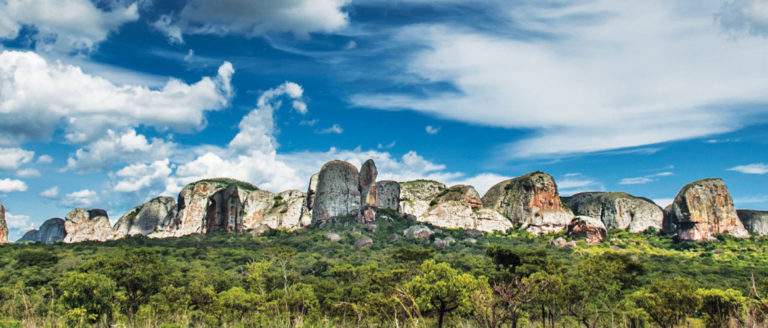
These strange rock formations form a stunning backdrop to the savannah. Picture: Ariclene Cruz
Travellers should heed a warning though these destinations will not always be well-maintained sites with clear paths, signposts and the like. Malanje province possesses natural and cultural resources to become a prime destination that requires the travellers not to view its destinations as unfortunate or untapped potential, but a nation going through the process of rebuilding and the ruggedness as a testament to the country’s difficult journey and a spectre of a destination that will one day welcome many travellers.
Planning your Journey
This is a trip for travellers who like to veer off the usual tracks and find something beautifully unique. It is worthwhile considering that the development of the province is part of Angola’s National Tourism Master Plan and Malanje province is earmarked as a national and cultural heritage destination. There is still a long way to go before it can become a thriving destination, but this should not be a deterrent for adventure or off-road travellers.
Travellers should therefore be well prepared and have their roots planned in advance. Stellenbosch University has done ground research for the National Tourism Master Plan on the development of the Melanje province whose pioneer study provides a list of possible tourism destinations and the state of roads in the map below.

A Map of travel destinations and road conditions done for Angola’s Tourism Master Plan. Those interested can access the study here.
As mentioned already, Angola does not have a well-developed tourism infrastructure, so for now, the best way to get around is with a 4×4 when considering the condition of many roads, river crossings and fast-changing landscapes. Melanje is not considered usually considered as a destination but it promises to be an adventure travellers dream. For those select few who are interested, this may provide the impetus to invest in its tourism and allow Angola to cross the threshold and become the destination it ought to be.











